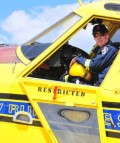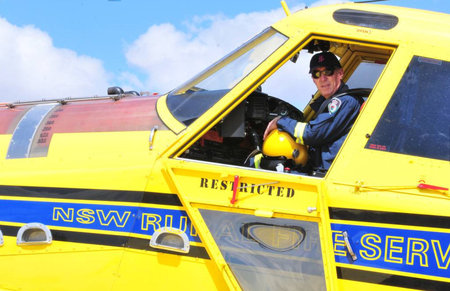Fred fights fire on a wing and a prayer
Published Date: 24 Jan 2014

Summary
Central Western Daily By NADINE MORTON
ALL you see is a quick flash and then suddenly 3000 litres of water comes bucketing down to earth to douse an out of control fire.
Pilot Fred Fahey is one of a small, highly skilled team of people that have been on hand to help Canobolas and Chifley fire crews to fight blazes from the sky.

These days aerial attack on a fire is just as essential as those fighting it on the ground.
There is no room for error as they swoop in at 100 knots (185km/h) and fly as low as 50 feet (15.24 metres) above the tree tops.
"To an untrained eye it looks like we're crazy," Mr Fahey said.
"One hundred to 110 knots is the dropping speed you slow down when you're dropping."
Since Saturday he has worked the skies to help firefighters across the Canobolas and Chifley zones and yesterday he was fighting the growing bushfire at Hells Hole.
A vital element to the operation is an aerial attack captain located in a helicopter hovering above the 2656 hectare blaze.
The captain's role is to direct pilots of fixed-wing bombers or helicopters where to dump their huge loads of water.
"They hover over to get a picture of the whole thing and tell us where to drop," Mr Fahey said.
Pilots are often the first on the scene and will report back to fire control with photos along with information on terrain, fire speed and direction.
"We're plotting it for crews and help determine how to access it for ground crews," Mr Fahey said.
Refilling his Air Tractor 802 is quick at just three minutes allowing him to make dozens of water drops over any fire if required.
Despite all the flights over the years Mr Fahey said he has never had a close call or scary moment.
"I've been doing this for 43 years and it's just part of normal life," he said.
Canobolas Zone membership services co-ordinator Nils Waite said aerial crews are just one weapons in the arsenal against a bushfire.
"There's a reason why they call it Hells Hole there's a lot of cliff areas and firefighters have to be very careful," he said.
"Aerial won't put out the fire you still need ground troops."



